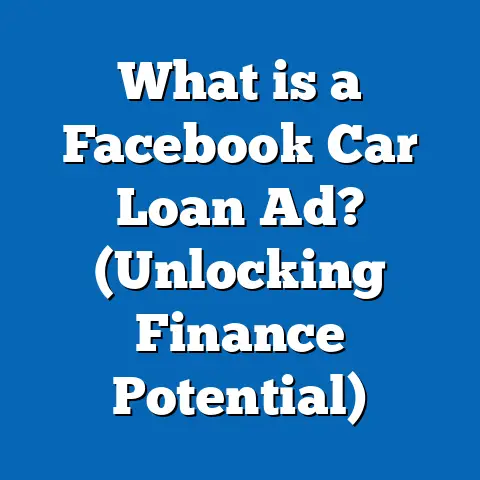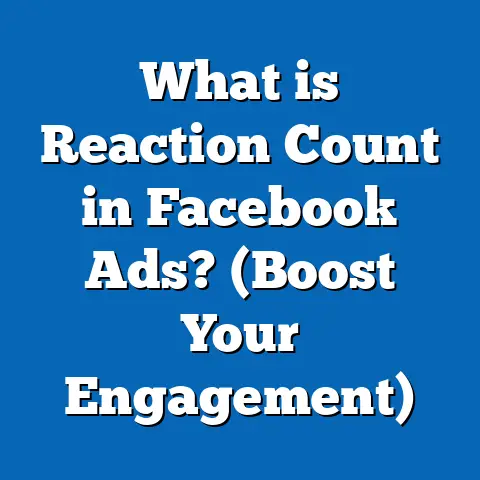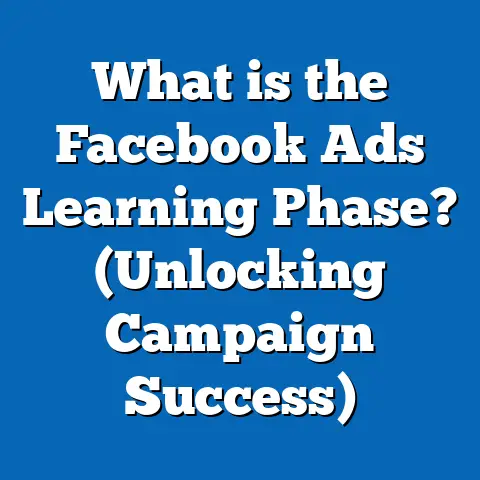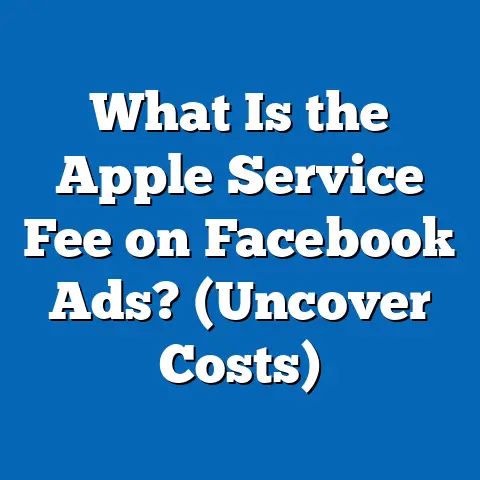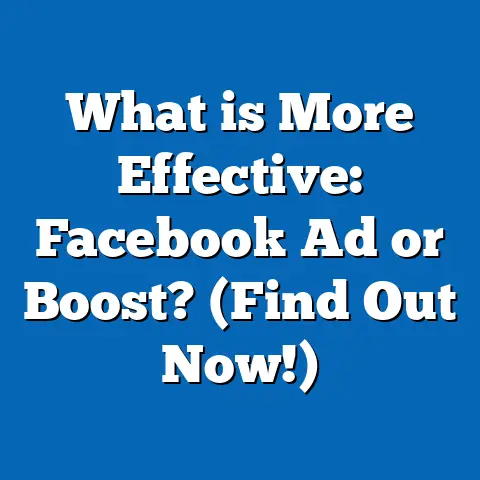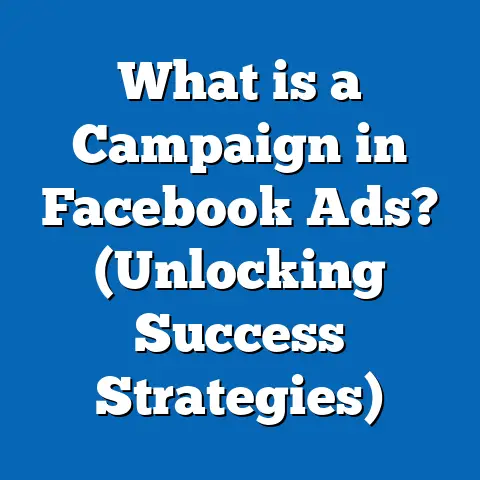What is Facebook Ad Payment? (Unlocking Your Ad Budget Secrets)
What is Facebook Ad Payment? (Unlocking Your Ad Budget Secrets)
Introduction: Setting the Scene
Imagine launching a Facebook ad campaign that reaches millions of potential customers worldwide. You have an engaging message, eye-catching visuals, and a carefully selected target audience. You expect your ads to generate leads, boost sales, and build brand awareness. But one critical question looms: how exactly does Facebook charge you for those ads? How do you ensure that your ad budget is spent wisely and efficiently?
Facebook advertising is one of the most powerful tools for marketers today. As of 2024, Facebook, under the parent company Meta, boasts over 2 billion active users globally. That’s more than a quarter of the world’s population. Businesses across every industry allocate billions of dollars annually on Facebook Ads, making it one of the largest digital advertising platforms worldwide. But despite this popularity, many marketers—especially novices—find Facebook’s billing and payment system confusing.
Understanding Facebook Ad Payment: The Basics
What is Facebook Ad Payment?
Facebook ad payment refers to the process by which advertisers are charged for the delivery and performance of ads on Facebook and its affiliated platforms like Instagram, Messenger, and Audience Network. Unlike traditional marketing where you pay upfront for ad space, Facebook charges advertisers dynamically based on how the ads perform and how much they are delivered.
This payment process involves several components:
- Ad Delivery: How often your ads are shown.
- Ad Engagement: The clicks, views, conversions generated by your ads.
- Bidding and Budgeting: How much you’re willing to pay for results.
- Payment Methods: How you pay Facebook for your advertising.
Facebook’s payment system is designed to be flexible and scalable—from small businesses spending a few dollars a day to global brands investing millions monthly.
How Does Facebook Charge Advertisers?
Facebook uses an auction-based system to determine how much an advertiser pays for their ads. Every time an ad is eligible to be shown to a user, it enters an auction alongside other competing ads targeting that same user.
The auction considers three main factors:
- Bid Amount: How much you are willing to pay.
- Estimated Action Rates: The likelihood that showing your ad will lead to the desired outcome (click, purchase).
- Ad Quality and Relevance Score: How relevant and engaging Facebook deems your ad to be.
The winning ad is the one that provides the highest total value based on these factors.
Payment Models
Here are the most common payment models Facebook offers:
- Cost Per Click (CPC): You pay only when someone clicks on your ad. CPC is good for traffic-driven campaigns.
- Cost Per Mille (CPM): You pay per 1,000 impressions (ad views). CPM is ideal for brand awareness campaigns.
- Cost Per Action (CPA): You pay when a user completes a specific action such as a purchase or sign-up.
- Cost Per View (CPV): Used primarily for video ads; you pay when users watch your video for a minimum amount of time.
- Cost Per Like / Engagement: For certain campaigns like page likes or post engagement.
Advertisers can select their preferred model based on campaign objectives.
Payment Methods Accepted by Facebook
Facebook supports a variety of payment methods to accommodate advertisers worldwide:
- Credit and Debit Cards: Visa, Mastercard, American Express are widely accepted.
- PayPal: Useful for international advertisers.
- Facebook Ad Coupons/Credits: Sometimes given as promotions or compensation.
- Manual Payments: Prepaid balance topped up by the advertiser.
- Bank Transfers/Direct Debit: Available in select countries.
- Meta Pay: The evolving unified payment system across Meta platforms.
Advertisers can add multiple payment methods and designate primary or backup options to avoid interruptions.
Deep Dive: How Facebook Billing Works
Billing Thresholds Explained
One unique aspect of Facebook’s billing system is its use of billing thresholds. This is the amount an advertiser can spend before Facebook charges their payment method.
For example:
- New advertisers typically start with a threshold around $25.
- Once you reach this threshold, Facebook bills your card or other payment method.
- If there’s no issue with that transaction, your threshold increases gradually ($50, $250, $500).
This system helps reduce failed payments by charging smaller amounts initially and building trust with the advertiser’s payment method.
What Happens When You Reach Your Threshold?
Once your spending hits your billing threshold, Facebook immediately charges your payment method. This process repeats until you reach your monthly billing limit or the end of the billing cycle.
Monthly Invoices and Billing Cycles
Facebook bills advertisers either when:
- The billing threshold is reached,
- Or at the end of the monthly billing cycle,
Whichever comes first.
The monthly billing cycle resets on the first day of each calendar month. If you don’t reach your threshold before month-end, you’ll be billed automatically for whatever amount you have spent.
Many large advertisers prefer monthly invoicing instead of threshold billing for easier accounting.
What If Payment Fails?
If payment fails due to insufficient funds or expired cards:
- Facebook pauses your ads immediately.
- You receive notifications to update your payment information.
- Ads resume once payment issues are resolved.
Repeated failures can lead to account suspension until resolved.
Key Data Points & Statistics About Facebook Ad Spend
Understanding the scale and cost benchmarks can help advertisers benchmark their spending and expectations.
- Meta reported $150 billion in ad revenue in 2024 alone.
- Approximately 10 million businesses actively advertise on Facebook monthly.
- Average CPC across all industries stands near $0.97 but varies by sector:
- Retail: $0.70 CPC
- Finance: $3.50 CPC
- Technology: $1.70 CPC
- Average CPM ranges from $5 to $12 globally but spikes during holidays (e.g., Black Friday can see CPMs above $20).
- Mobile ads dominate with over 94% of total spend on mobile placements.
- Campaigns using automatic bidding report up to 30% better cost efficiency compared to manual bidding.
This data highlights how competitive and dynamic Facebook’s advertising marketplace is.
Practical Insights: Managing Your Facebook Ad Budget Effectively
Managing your budget correctly is essential for maximizing ROI and avoiding wasted spend.
Setting Budgets That Work
Facebook allows two main budget types:
- Daily Budget: Controls how much you spend each day. Ideal if you want consistent daily exposure and control cash flow tightly.
- Lifetime Budget: Sets a total spend limit for an entire campaign duration. Offers flexibility for budget pacing over weeks or months.
Choosing between daily vs lifetime budgets:
| Factor | Daily Budget | Lifetime Budget |
|---|---|---|
| Control over daily spend | High | Moderate |
| Flexibility in pacing | Low | High |
| Best for | Short campaigns or testing | Long campaigns with varied pacing |
Tips to Optimize Your Ad Spend
- Start Small & Scale Gradually: Begin campaigns with $5-$20 daily budgets to test creatives and targeting before scaling.
- Use Automatic Bidding: Allow Facebook’s machine learning algorithms to optimize bids for best results within budget constraints.
- Monitor Frequency Closely: High frequency (>3) often leads to audience fatigue and lower ROI; refresh creatives regularly.
- Pause Poor Performing Ads Quickly: Regularly analyze performance metrics and stop ads wasting budget.
- Leverage Campaign Budget Optimization (CBO): CBO distributes budget across ad sets based on performance automatically—saving manual effort.
- Use Dayparting (Ad Scheduling): Show ads only at times when your audience is most active or likely to convert.
Budget Allocation Strategies
Consider allocating budgets based on funnel stages:
- Awareness Stage: Allocate around 30%-40% budget focusing on CPM-based campaigns to build reach.
- Consideration Stage: Allocate 40%-50% targeting clicks or engagement (CPC/CPA).
- Conversion Stage: Allocate 10%-20% targeting CPA or ROAS-driven campaigns.
Advanced Concepts in Facebook Ad Payments
Understanding Attribution Models
Attribution determines how credit for conversions is assigned across touchpoints in a user’s journey.
Facebook offers several attribution windows:
- Last Click Attribution: Credits conversion to last clicked ad.
- 7-day Click & 1-day View (Default): Credits conversions within 7 days after click or 1 day after viewing an ad without clicking.
- Data-driven Attribution: Uses machine learning to assign conversion credit based on actual user behavior patterns.
Why this matters: Attribution impacts how you evaluate ROI and optimize budgets. For instance, short attribution windows may undervalue upper-funnel campaigns generating delayed conversions.
Handling Payment Failures and Disputes
Payment failures can arise due to:
- Expired credit cards
- Insufficient funds
- Fraud prevention blocks by banks
- Incorrect billing info
Facebook sends alerts immediately when failures occur and pauses ads until resolved. Advertisers should keep payment info updated proactively.
Disputes require contacting Facebook Business Support with transaction details—especially if unauthorized charges are suspected.
Currency and Tax Considerations
Facebook charges advertisers in their selected currency but may apply conversion fees depending on chosen payment method.
Additionally:
- VAT or GST may be added based on country regulations.
- Advertisers should consult tax advisors regarding deductible advertising expenses.
Case Studies: Real-World Applications of Facebook Ad Payment Strategies
Case Study 1: Small E-commerce Business Optimizing Payment Thresholds
A small jewelry startup launched its first Facebook campaign with a $25 billing threshold and daily budget of $10. By carefully monitoring ad performance daily and using automatic bidding, they avoided overspending while testing multiple creatives and audiences.
After consistent successful payments, their billing threshold increased to $250 automatically — enabling them to scale their campaigns smoothly without interruptions in ad delivery or cash flow surprises.
This approach helped maintain steady growth with controlled financial risk.
Case Study 2: Large Retail Brand Using Monthly Invoices for Simplified Accounting
A national retail chain spending over $500,000 monthly negotiated monthly invoicing terms with Facebook rather than relying on billing thresholds. This arrangement allowed them to receive consolidated invoices at month-end for easier reconciliation with internal finance teams.
Moreover, they used advanced tracking pixels combined with data-driven attribution models to optimize their campaigns based on accurate conversion data — achieving a 25% increase in ROAS year-over-year while maintaining tight budget control.
Case Study 3: SaaS Company Leveraging Automatic Bidding & Budget Optimization
A SaaS company specializing in B2B software started with manual CPC bidding but found costs were high and unstable. Switching to automatic bidding combined with Campaign Budget Optimization (CBO) reduced their average CPA by 20% within three months while increasing lead volume by 35%.
They also segmented budgets by funnel stages — allocating more funds into retargeting campaigns with higher conversion likelihood — which improved overall profitability.
Comparing Facebook Ad Payments with Other Major Platforms
| Platform | Payment Models | Billing Threshold | Popular Payment Methods | Notable Features |
|---|---|---|---|---|
| Facebook Ads | CPC, CPM, CPA, CPV | Yes | Credit cards, PayPal, Bank transfer | Flexible bidding; CBO; integrated across Instagram & Messenger |
| Google Ads | CPC, CPM, CPA | Yes | Credit cards, Bank transfer | Keyword targeting; Search intent focus |
| LinkedIn Ads | CPC, CPM | Yes | Credit cards | B2B targeting; high CPC costs |
| Twitter Ads | CPC, CPM | Yes | Credit cards | Real-time engagement; trending topics |
| TikTok Ads | CPC, CPM | Yes | Credit cards | Younger audience focus; video-centric |
Facebook’s billing threshold system is similar to Google Ads but offers more global payment options like PayPal and manual payments which can be handy for small international businesses. Its integration with Instagram also provides cross-platform budgeting advantages not matched by most competitors.
Technical Walkthrough: Setting Up Your Payment Method & Billing Details
To start paying for Facebook Ads efficiently:
- Go to Facebook Business Manager > Payment Settings.
- Add your preferred payment method (card, PayPal).
- Set your country and currency carefully as these cannot be changed later without creating a new account.
- Review billing threshold status under account spending limit settings.
- Enable two-factor authentication for added security.
- Set up email notifications for billing alerts.
- Keep multiple payment methods handy as backups.
Troubleshooting Common Payment Issues
Some common problems advertisers face include:
- Payment Declined: Check card expiry date, sufficient funds, bank blocks on international payments.
- Currency Mismatch Charges: Verify currency settings match payment method currency to avoid conversion fees.
- Billing Threshold Not Increasing: Ensure consistent successful payments; contact support if stuck at low thresholds preventing scaling.
- Multiple Charges: Cross-check multiple active campaigns or overlapping billing cycles; review invoices carefully.
If problems persist:
- Contact Facebook Business Support via chat or email.
- Provide detailed screenshots of error messages or transaction history.
- Consider switching payment methods temporarily if one fails repeatedly.
Summary & Next Steps
Understanding Facebook ad payment mechanics is essential for every marketer aiming to maximize advertising ROI while minimizing financial risks.
Key Takeaways
- Facebook charges dynamically based on auction results using models like CPC, CPM, CPA.
- Billing thresholds govern when you’re charged; thresholds increase over time with good payment history.
- Choose between daily vs lifetime budgets based on campaign needs.
- Use automatic bidding and Campaign Budget Optimization (CBO) for efficient budget usage.
- Monitor frequency and performance closely; pause poor performers quickly.
- Stay updated on new features like Meta Pay integration and AI budget recommendations.
- Troubleshoot issues proactively by keeping payment methods current and contacting support when needed.
Next Steps
- Audit your current Facebook ad account’s payment methods and billing settings.
- Experiment with small budget tests using different bidding models to find what works best for your business goals.
- Implement Campaign Budget Optimization (CBO) in upcoming campaigns.
- Use Meta’s new AI-powered budgeting tools as they roll out for improved spend forecasting.
- Regularly review invoices and spending reports monthly for anomalies or opportunities to optimize further.
Mastering these payment secrets will unlock greater control over your ad budget—helping you scale campaigns confidently while protecting your bottom line.
If you want me to expand further on any specific section such as advanced bidding strategies, detailed case studies by industry type, or technical setup guides for Meta Pay integration — just let me know!

